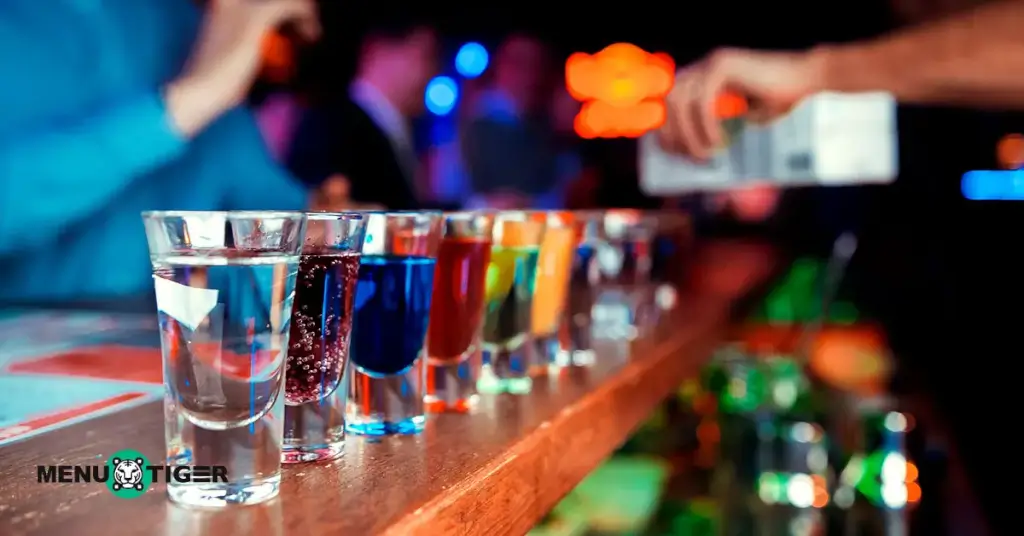To alcohol lovers, luxury may be sipping the 925 Diamante once or maybe just having a shot to relax after an office’s workload. Say whatever, but alcohol has been a resort to many, especially in the US.
In fact, in the challenging recession after 2020, the bar industry is expected to grow by $31 billion between 2024 and 2027.
Such staggering graphs only persuade businesses to test their hands in the industry. If you plan to invest or start a bar business, you’ve landed on the right page.
This is a comprehensive blog about how many types of bar and ways to enhance the customer experience through digital or interactive restaurant menu software.
Table of Contents
ToggleWhat are the different types of bars?
Before discussing bar types, let’s define a bar. A bar is typically a market establishment that serves alcoholic drinks. It is usually a go-to place to enjoy a nice drink.
However, its definition has evolved, and now the bar industry also serves non-alcoholic beverages, light food items, and music and invites DJs to boost operating hours.
There are many types of bar establishments. These days, bar owners are getting more innovative and are popping up bar cafe, mobile bar, and even underground bar. But here is a list of five that are quite popular and profitable in the market:
Cocktail Bars
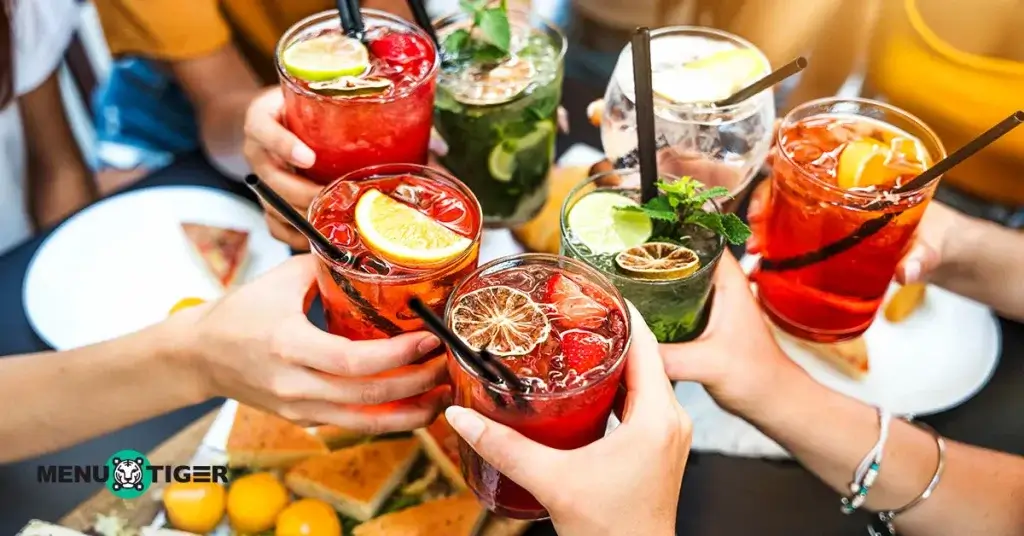
Cocktail bars offer various drinks, such as mojitos, margaritas, espresso martinis, and the latest cocktail trends to patrons.
This bar type has a chic ambiance that aims to refine the evening experience of drink lovers.
Their skilled bartenders, also called mixologists, focus on creating sophisticated environments tailored to provide the best drinking experience, fused with some side appetizers.
Predominantly located in downtowns, cocktail bars are popular among small family evening celebrations, date night couples, and food and culinary art enthusiasts.
Wine Bars
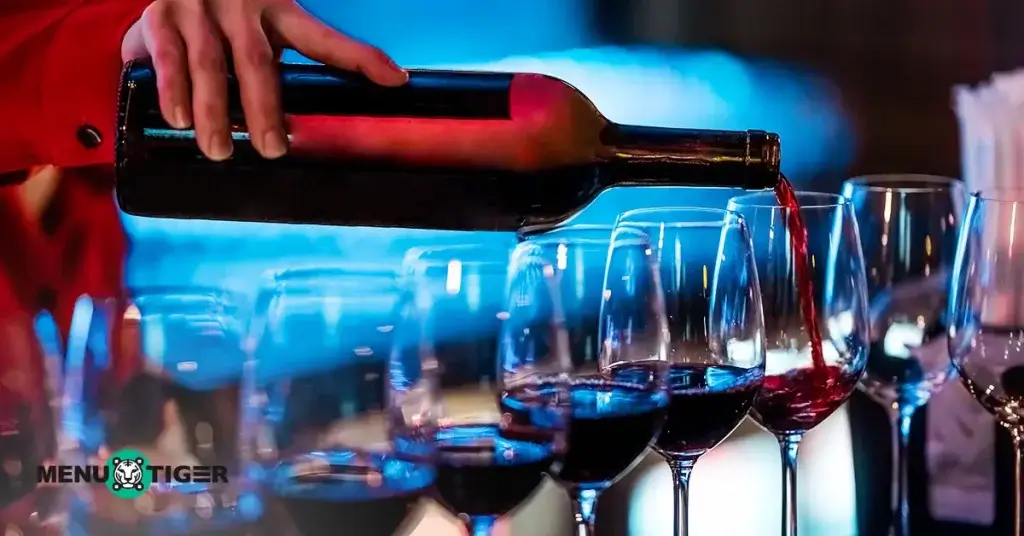
Wine bars exclusively offer an extensive range of fine wines. Unlike cocktail bars, their main beverage servings are different types of wines only, such as vintage, cheap, expensive, local, and even imported ones. Such bars are places for curious drinkers who want to taste a specific type.
The staff is well versed in various wines and wine pairing and helps recommend customers to have the best. The ambiance of such bars usually defines calmness and subtle decor.
Wine bars are popular among adult wine enthusiasts and old age groups who prefer quiet environments over loud music. Additionally, young people and tourists are also on this list.
Dance Bars
Dance bars are venues where dancers perform for entertainment, often accompanied by music.
It gained prominence in cities like Mumbai, often serving as a nightlife attraction. They faced bans in 2005 over moral concerns but were reinstated in 2015 with stringent guidelines, such as installing CCTV cameras, prohibiting indecent performances, and maintaining safe working conditions for dancers.
In Western countries, dance bars range from casual clubs with DJ-led music to themed venues featuring burlesque, cabaret, or salsa performances. In East Asia, on one hand, venues like hostess clubs blend socializing with performances, often emphasizing elegance and hospitality.
Generally, dance bars serve as social hubs and outlets for creative expression but face scrutiny over-exploitation risks.
Craft Beer Bars
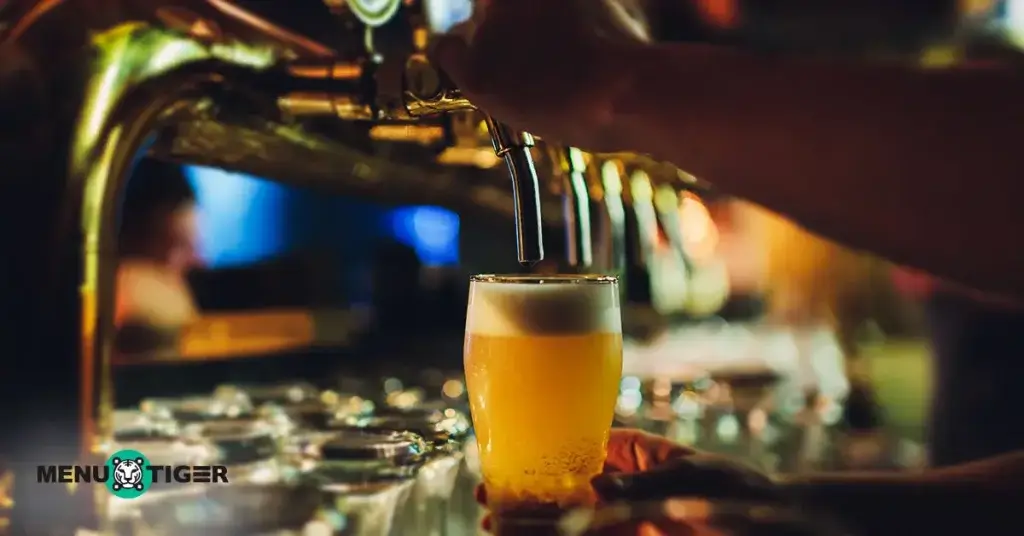
Craft beer bars are shops focused on selling high-quality craft beers.
Unlike macro breweries, these bars are often small and produce smaller quantities of beer. Craft breweries usually operate on a smaller commercial level, focusing mainly on traditional flavors and the quality of beers.
However, craft beer bar owners don’t hesitate to add a splash of modern flavors. Interestingly, craft beer bars serving non-alcoholic beers are becoming increasingly popular.
Brew Pubs
Brewpubs typically combine a brewery and a pub-short for a public house. Unlike other bars, a brew pub produces beverages on-site and serves fresh beers complemented with eating items.
Brewpubs promote the art of brewing; in many such pubs, the brewing process is visible to customers. They are perfect for enjoying a freshly produced beer and for education purposes.
Sports Bar
As its name says, sports bars are places for sports fans. These bars often have wide screens for sports events, and they keep famous sports memorabilia to showcase. The interior themes are sport-specific, and in servings, they deal with food and drink menu items — mixed wines, spirits, or beers.
Sports bars focus more on entertaining their customers with sports entertainment on screen over food and drinks.

Why is it important to learn the different kinds of bars?
From an owner’s perspective, the knowledge of different types of bars caters to the decision-making process.
Every other bar has its budget demands. For example, opening a cocktail and wine bar may be costlier because of its diverse drink range than opening a craft beer bar.
Similarly, a karaoke bar might demand more space than a cocktail bar.
So, such peripheries make it essential for aspiring owners to learn about the kinds of bars before finalizing one.
6 best practices to implement in any type of bar you run
It is needless to state reasons why customer experience must be every business’ priority — profit is directly proportional to customer satisfaction, isn’t it? Satisfied customers often convey their experience to others, and word of mouth is powerful.
Here are a few best practices that can assist existing and aspiring bar owners in enhancing their customer experience and thus increasing profit margins.
Optimize traditional menus with digital menus for all bar types
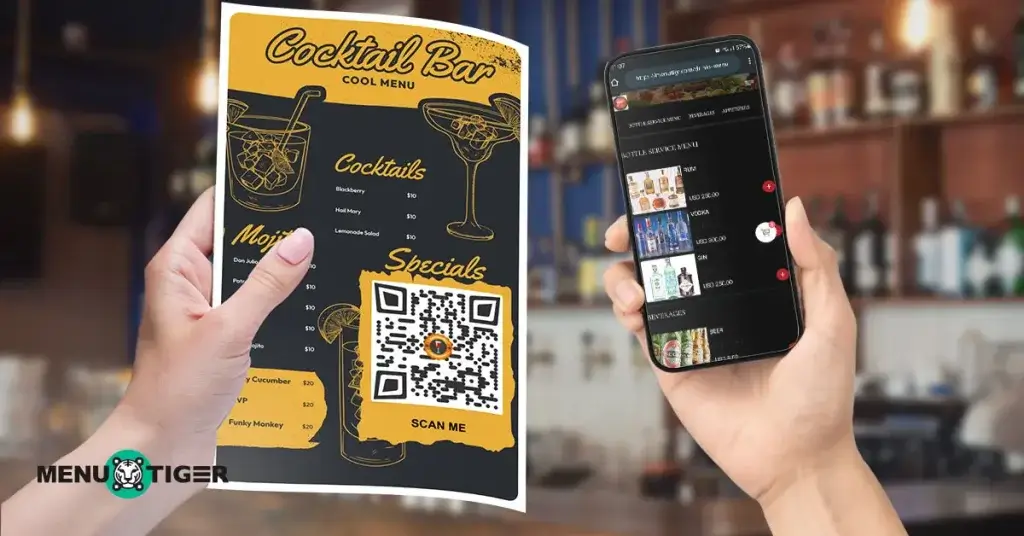
The concept of digitizing bar menus has recently emerged as a new norm in the hospitality industry.
If you are using a traditional paper menu, it is time to upgrade it.
Instead of offering a reused paper menu, try to integrate a phone-accessible QR menu. They’re a mainstream addition in the restaurant and bar scene that your customers will not constantly ask how to scan a menu QR with their gadgets.
Besides customers loving this concept because of the streamlined order process, the print cost-cutting associated with this practice is also something to consider. Digital restaurant menu can be upgraded easily, which would cost bucks for reprinting in traditional ones.
Take Tootsie’s Cabaret, for example. This Miami venue integrates a QR code menu system, allowing guests to order seamlessly while helping staff manage high-demand nights efficiently.
You can create and display a digital menu QR code on either the tables or simply place one big QR code on the dominating wall at the entrance.
Train the staff to communicate with customers
Your old customers might not need assistance, but new ones definitely do. Bartenders must be skilled in their jobs, as the alcohol industry must strictly abide by the law.
Before introducing them to customers, professional training is vital for personalizing the customer experience and considering health. Bartenders must know different wine types and their adequate consumption amounts.
A trained bartender caters to individual customers’ taste interests. He can provide recommendations based on combining his knowledge with the customer’s desire or occasion type.
Only a well-trained staff can retain customers because no one prefers taste over unprofessional exchange of words.
Specify a bar theme
You might have heard many people talk more about a restaurant’s ambiance than its food. Food and drinks are everywhere, but the ambiance makes a place distinctive.
So, be anything but ordinary — specify a theme for your bar. You can take inspiration from US bars, such as Wreck Bar with a Marine theme, Connie Bar with an airplane theme, and Beetle House with a Halloween Theme.
When specifying a bar theme, you should consider three factors: local culture, target audience, and space layout. There’s no intelligence in opting for an airplane theme in a square-shaped bar.
Be there to welcome the guest
‘Greeting and Seating’ are two very crucial aspects of customer service. How would you instead feel about not being warmly welcomed and directed to your seat in any place, let alone a restaurant or bar?
Welcome your customers just like your guests at home and see the difference. Big establishments often comply with local culture to welcome their guests, and so can bars. In bars, you can just employ a staff member to greet and direct the customers to their booked seats. That would quite make an impression.
Serve the ‘fresh and vibrant’
Bars are best defined as ‘fresh and vibrant.’ Colorful and refreshing drinks on the weekend must be worthy of a hectic week. So, let your paper or QR code menu speak for itself. Serve quality drinks to your customers. Implement daily prepping instead of storing the leftovers.
In cocktail bars, the ingredients used, like fruits, creams, or herbs, must be freshly produced or picked.
To make the most of the spirits, wines, and beers, choose to bring in sufficient quantities so that no long-term storage happens. Therefore, implementing First In, First Out (FIFO) is a great approach.
Choose fancy, elegant glassware and garnish drinks to serve vibrant, eye-catching presentations.
Install a digital display
Video marketing strategy is already a worthy hype in the e-commerce and Retail industry, but restaurants and bars are no exception now.
Digital displays are large screens (LEDs) installed on the dominating wall of an establishment both for marketing and audience engagement purposes. A bar can benefit from digital signage in several ways, but two prominent are:
- In creating an engaging atmosphere for customers
People often visit places like bars and cafes for a better atmosphere that’s usually different from regular life.
So, making their experience richer through a digital display, especially for alone-comers, is like the cherry on top. Bars can feature live sports, entertainment, or music videos that appeal to and engage young customers while enjoying their drinks.
- In displaying signature menu items
One of the best digital bar menu ideas you can do is to display your signature drinks and top-selling items on digital signage so that customers who missed them or couldn’t pay attention can take cognizance of them.
Motion graphics often encourage impulse shopping, and the same applies to mouth-watering drinks when displayed on a screen in a bar.

Kickstart your QR code menu-powered bar operation with MENU TIGER
Whether you’re showcasing craft cocktails, non-alcoholic beers, or full-bodied wine for different types of bars, digital restaurant software provides a seamless, hassle-free solution that puts you in control.
A place to start the upgrade? MENU TIGER.
Our no-code platform lets you update your menu anytime, anywhere, keeping it fresh and exciting for your customers.
Join the growing community of innovative bar and restaurant owners who trust our interactive restaurant menu software to bring their menu vision to life. It’s time to make your menu as dynamic as your venue. Start creating your first digital menu today — sign up now and see the difference.
FAQs
A bar typically falls under the category of hospitality or food and beverage (F&B) industry. Within these broader categories, bars are specifically part of the nightlife or entertainment sector, often grouped with restaurants, pubs, lounges, clubs, and other establishments that serve food and drinks to customers in a social setting.
Bars can have various names depending on their style, concept, and target audience. Here are some common alternative names for bars:
– Pub
– Tavern
– Lounge
– Saloon
– Speakeasy
– Taproom
– Brewpub
– Club
– Cocktail bar

